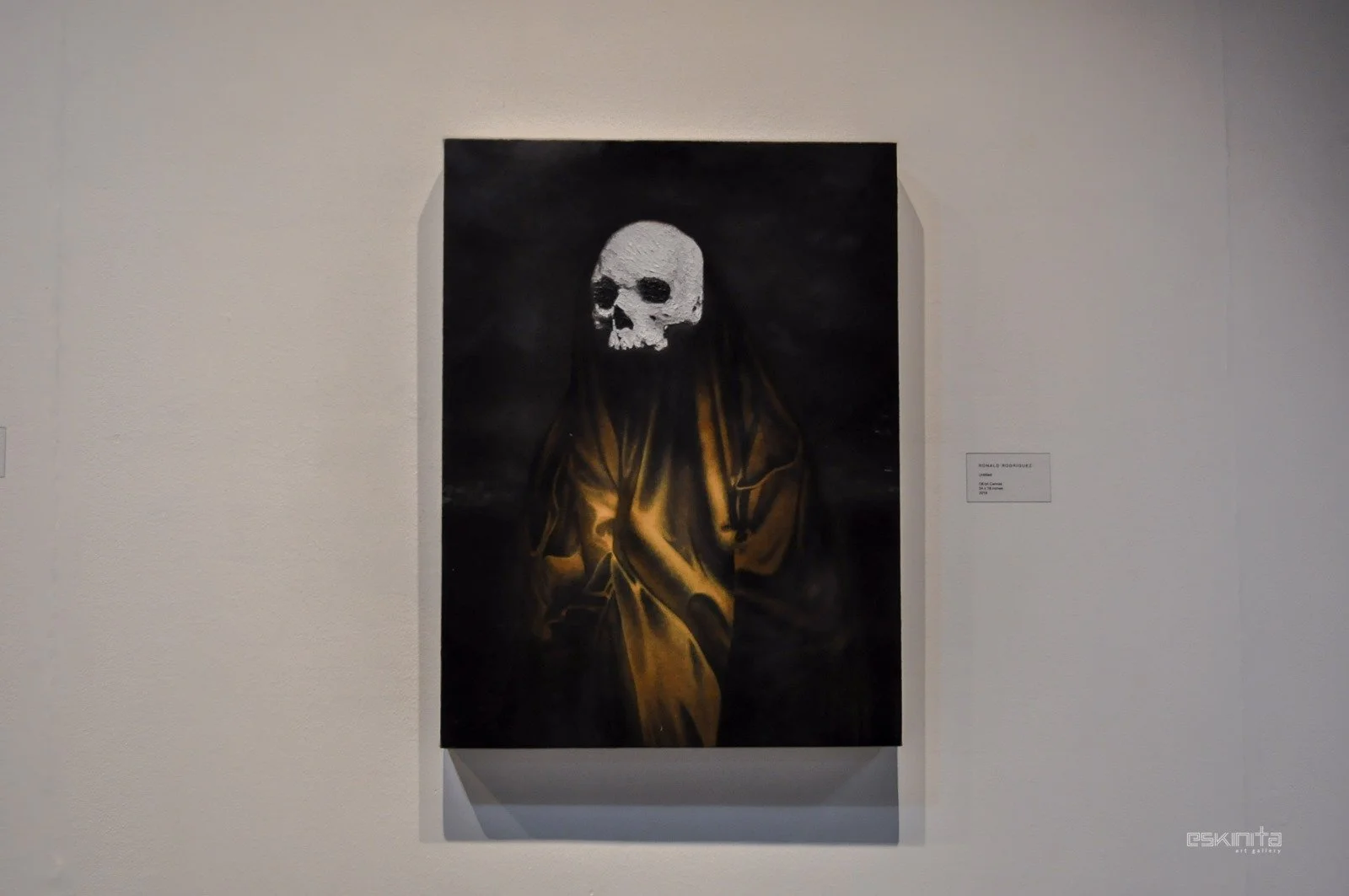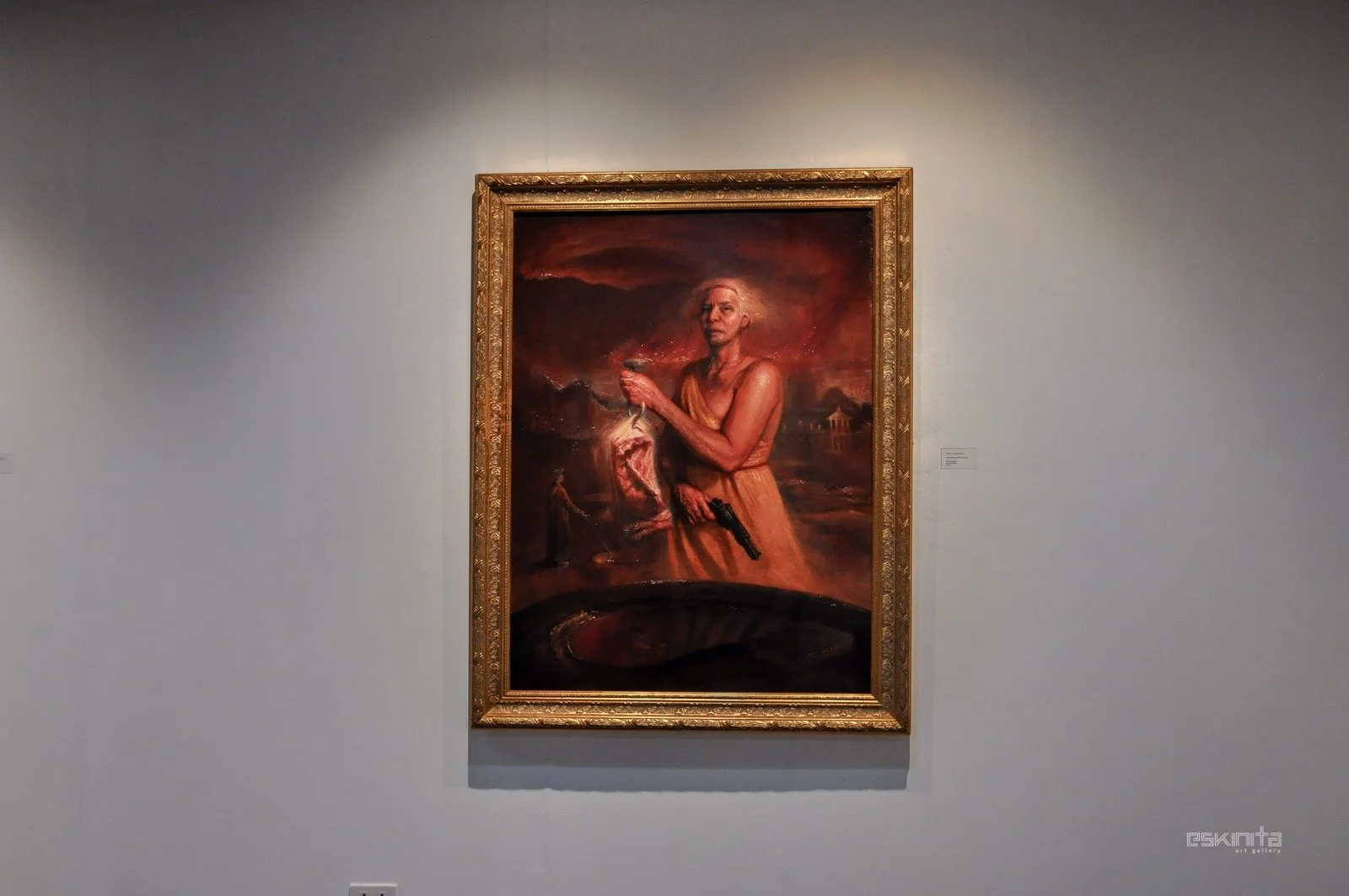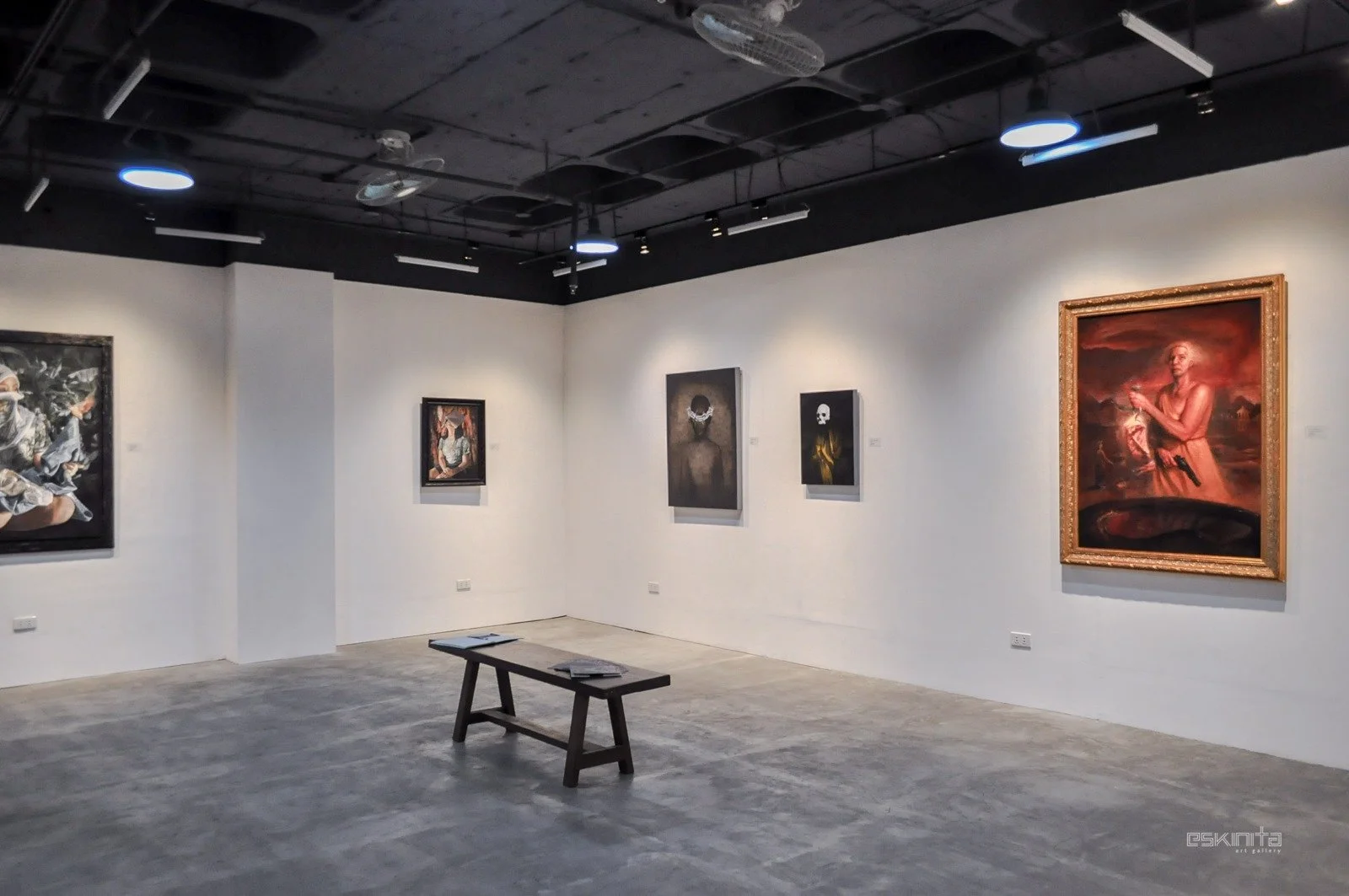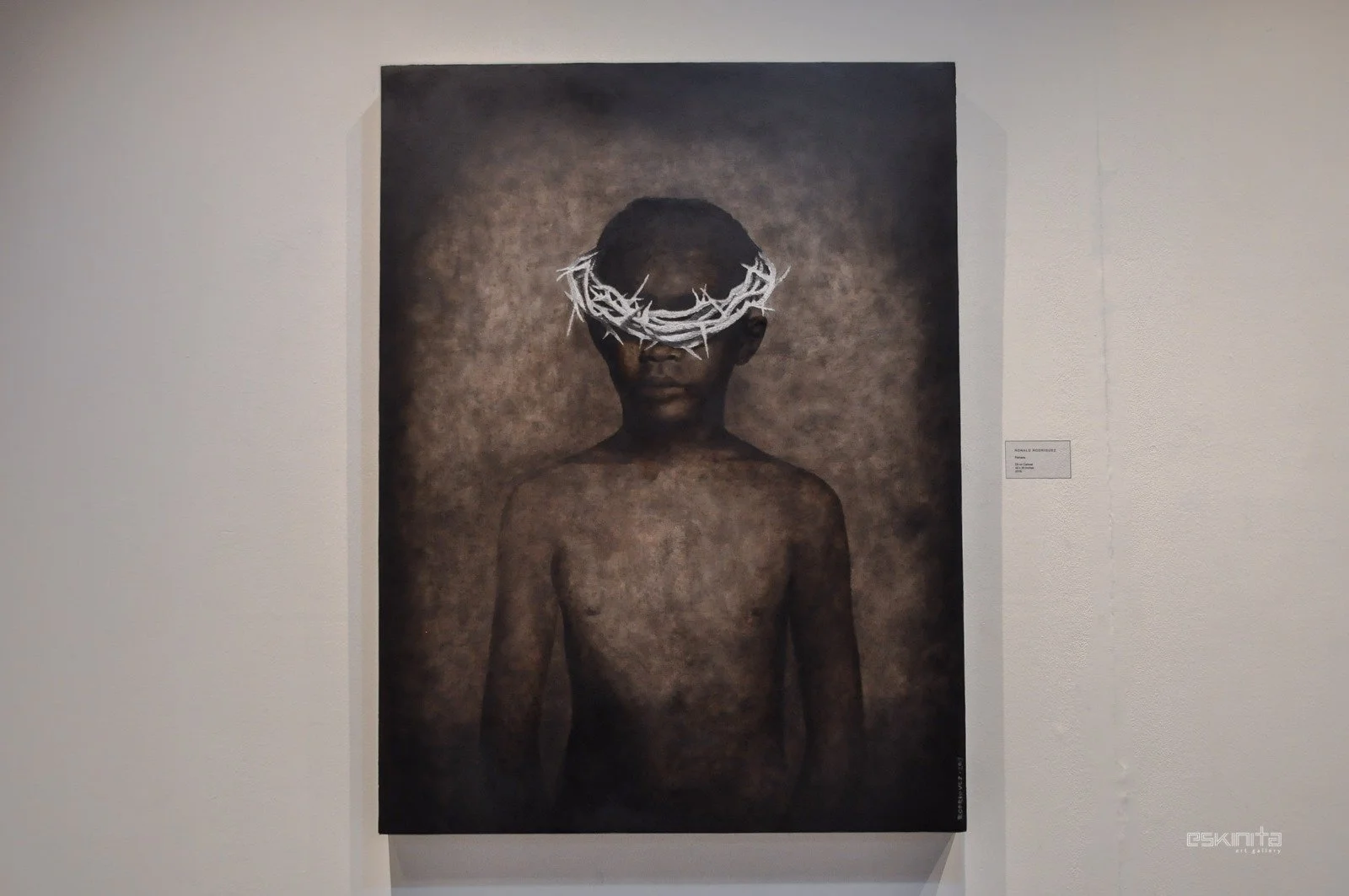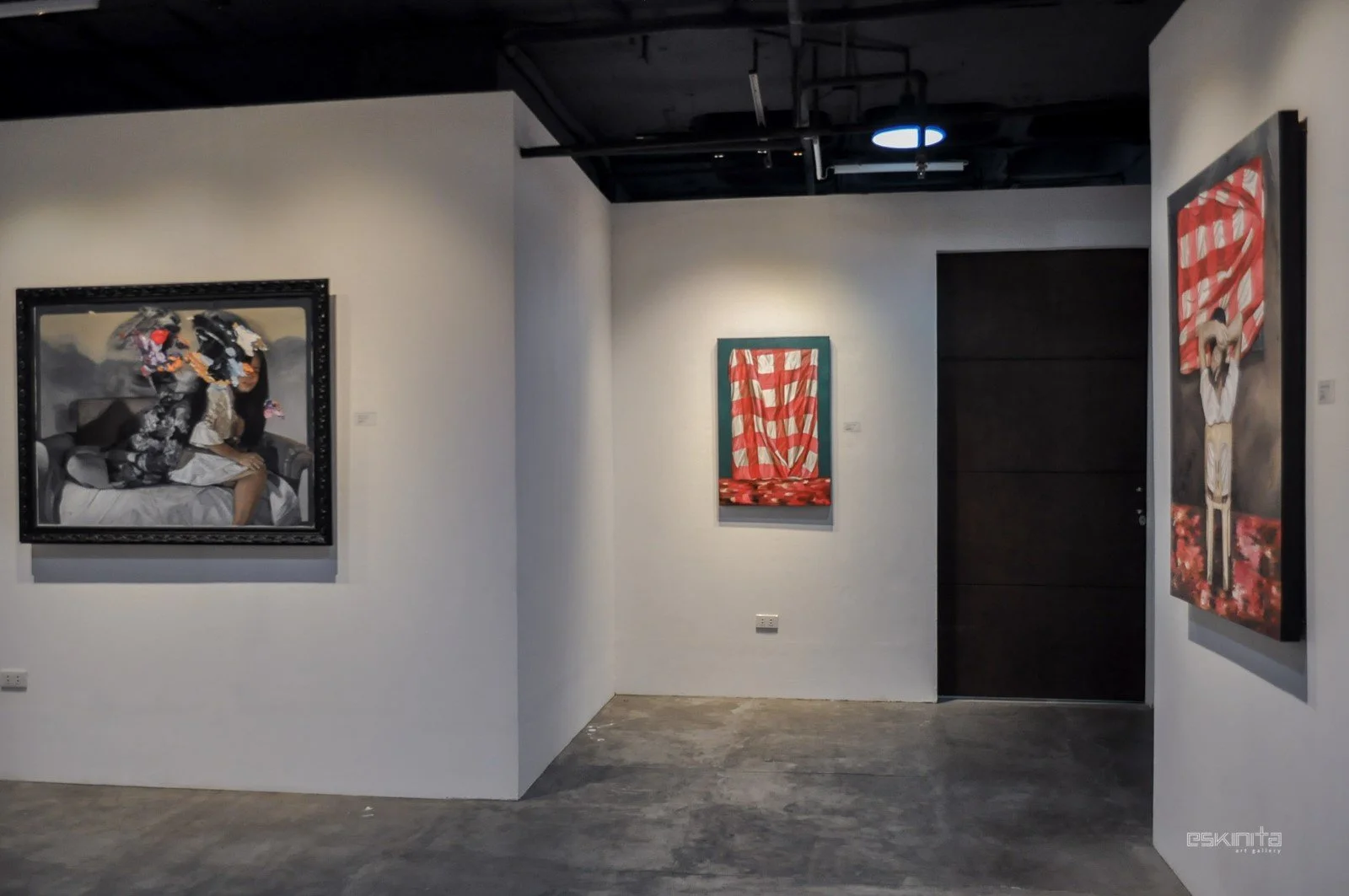
Magkabilaan
Argee Dacuyan/ Marloun Mago/ Tony Mercado/ Emerson Rabbon/ Ronald Rodriguez
May 21 to June 11, 2019
Tension between perspectives has been an integral part of being human. One struggles to arrive with a critical understanding of the other, but with bias that already exists within, how then, are we supposed to understand the other given this question of difference?
In “Magkabilaan” Dacuyan, Mercado, Mago, Rabbon and Rodriguez appraise the nuances of conflicts while simultaneously fiddling with a cryptic and mystical approach in light of the exhibition. Dacuyan’s exhibits alternate reality in a beguiling image of playful pretense. He also dwells on time yet ironically urges one to not be entrapped in such a restricting condition. With a play on various symbolisms and skilful strokes that embodied objects that are seemingly of the subject’s past, he made use of a bird to represent the very message of letting go.
Rodriguez aims to reflect current occurrences and sooner, their aftermath. He lodges on the past, and the possibility of it to reflect the future — a continuum that was already before us and will go one long after we are gone. His subject, while blindfolded, aims to dream for a new day, and at the same time, escape from a battle he didn’t know was already fighting.
On the other side of the spectrum, we see Marcado’s blatant outtake on belief systems and idealism through the armed woman with a carcass. Here he lingers over our natural urge to present our personal bias and idealisms that we deem right, and little contentions may be met immediately with violence as represented by the gun and the bloodshed besmirched on the well due to this war on conflict. For Mercado, the conflict between beliefs and blind idealism, or the desire to be the ultimate right is a burden that we indeed carry.
For Mago, cruelty and viciousness are the things that authentically mark conflict. A particular point of attitude, inexorable and resolute, meeting another should mean warfare and hostility. The urge to absolutely maintain one’s ideas lead to callousness and brutish behaviors. Yet his strokes of color somehow indicate an other-worldly sensation, and ironically put the subjects in a contradicting sensation.
Clasping onto one’s particular sensibilities is a virtue that Rabbon intends to tell. His usage of the cloth symbolises comfort and protection — the importance of nursing that of which is highly valuable, and the importance of patience. People engage in discord, but in the end, there is always much to consider and reflect on. Human beings in their grace and imagination, in every single caution of far flung thoughts and ideas, there is always something to learn from.
-Karen Tesalona
